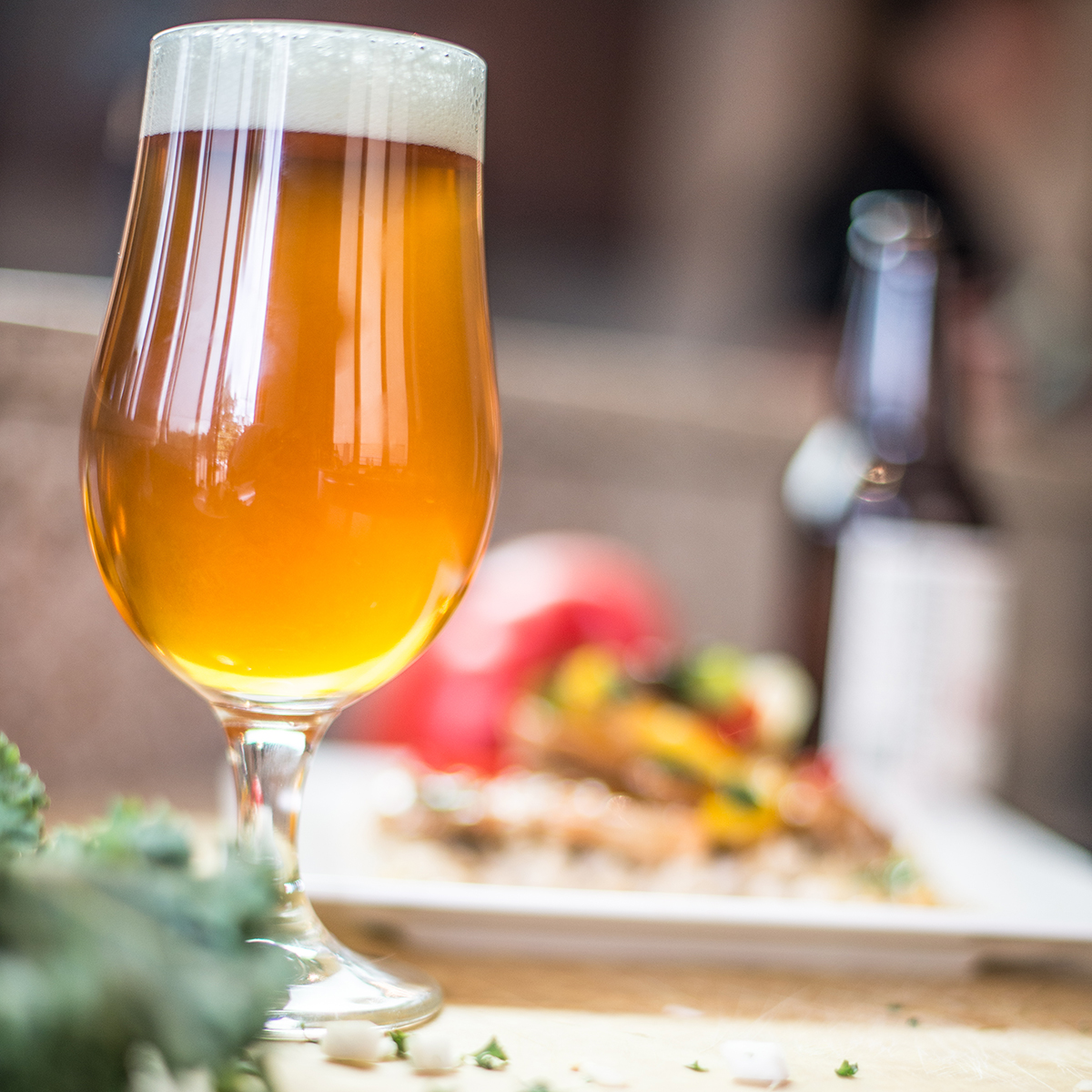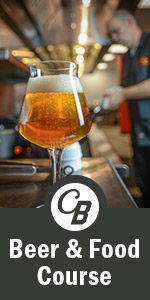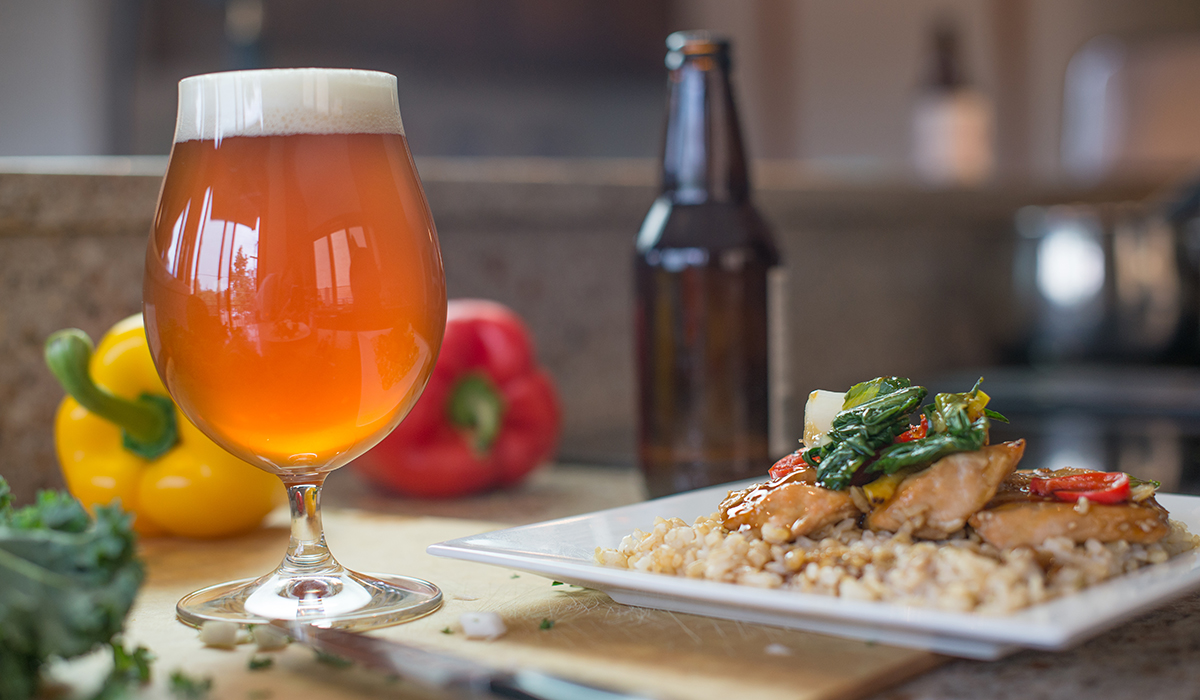The IPA is easily the most sought after and consumed craft beer style in the U.S. right now. Of course there are always two sides to every story.
On the other side, the IPA’s strong flavors can elicit negative reactions from beer drinkers who are new to craft. IPAs can also be train wrecks in pairing.
(LEARN: 75+ Popular Beer Styles)
How can the beer style every beer drinker seems to want turn palates away from beer?
Let’s give the IPA, and those who are trying it for the first time, a little help so they have a better chance of enjoying this now iconic beer style.
Ditch the Word ‘Bitter’ When You Talk About IPAs

First off let’s start with descriptors. Stop saying bitter. Let’s get on the same page as spirits and wine descriptors. Words like pine, lemon peel, orange zest, rosemary, thyme, floral — any of these give even the most inexperienced beer palate a better chance of understanding what they are going to taste instead of bitter.
Alright, now let’s get some food in here to make the palate really enjoy and appreciate what an IPA can do (that neither wine or spirits can).
Here are some culinary pointers on how to discover more than “bitter” in these five IPA styles.
(READ: 11 Summer Beers for People Who Appreciate the Classics)Opens in new window
How to Pair 5 IPA Styles
East Coast IPA
Use your grill for proteins with this style. Get some fresh herbs like parsley, tarragon, chives and dill. Finish a dish with a little lemon. If you’re making a salad dressing, sub out the vinegar for fresh lemon juice. All of these culinary techniques contribute to balancing the palate where this IPA style hits the hardest, which calms the palate. Instead of tasting bitter you taste the notes from the hops, the balance of the malt and the gentle scrubbing of the palate.
Need some fat here if it’s a bit over hopped? Turn to olive oil and allow it to push the hops to the aroma area of the mouth and keep the palate in check to enjoy the next bite.
West Coast IPA
Two words here: Maillard Reaction. This is essentially the browning of proteins. Think roasted chicken, a crusty loaf of bread, a great sear on a steak.
So why does it work with these IPAs? The Maillard Reaction is actually the same process malt goes through. In fact, the number one flavor identifier for Maillard is “malty.” West Coast IPAs are commonly associated with backing down on the malt a little bit, so using the Maillard Reaction brings it right back up to balance the flavors.
(READ: 5 Activities to Take You from Beer Beginner to In-the-Know)Opens in new window
Session IPA
A common misconception is that session IPAs are easier to drink. In the case of ABV they are, but in every other way they are not “lighter.” 
To bring out the best qualities of a session IPA, turn to acid in the kitchen: fresh tomatoes, zest from lemon or oranges, finishing a dish with a little bit of great vinegar whether it be sherry or champagne (or even beer vinegar if you have some).
This little bright flavor burst not only highlights the flavors in a dish but also primes the palate for the lower gravity in the beer and helps push the notes that are in the beer to all the right places on the palate. Try making a watermelon and tomato salad and soak the watermelon in a few dashes of vinegar for about 20 minutes and you’ll see exactly what we mean.
Imperial IPA
Imperial IPAs have bigger and bigger flavors — more cowbell, please. You’ll find intense hop aromas, big flavors and often some palate numbing effects.
When pairing a beer style this intense, fat is your friend. (And as a friendly culinary reminder: flavor ain’t free, so please use some fat.) Maybe you have a seared chicken breast? Throw a tablespoon or two of butter and some fresh herbs in the pan during the last few minutes and baste with a spoon. Are you roasting some potatoes? Serve it with a side of aioli for dipping pleasure. If you have grilled fish, take some fresh herbs and maybe even some capers and add this to the aioli.
Fat is key here. You need to protect and preserve your palate to enjoy all the flavors in the food and the beer. A little fat goes a long way in bringing out some of the most complex and deep flavors that many never get to taste in a big imperial IPA.
One final note: Do you want some dessert? Vanilla ice cream, cream cheese frosting and carrot cake do wonderful things with this beer style.
(READ: So You Want to Be a Beer Judge?Opens in new window)
Black IPA
Say hello to braises, hearty stews, confit proteins, caramelized onions, blue cheese and friends. Taking a few flavor notes from the world of stouts allows your palate to explore what deep, dark roasted notes can do when combined with a bigger dosage of hop in black IPAs.
The main difference in the use of fat in these dishes is that the primary ingredient has a well-marbled flavor to it. Look back above to the imperial IPA real quick. Do you see there we accented lower fat items with a bigger source of fat? With black IPAs, we are taking richer fat items and going straight to the pairing source of darker malts. A well-reduced sauce, an amazingly tender braised protein, a rich creamy blue cheese all have the chance to overwhelm the palate on their own. When paired with a black IPA, the hops come in and act as little scrubbers along with the carbonation and lift those heavy flavors off the palate.
So what role did the food play? That heavy coating lulled your palate into a quick nap so that the hops came in nice and slow and hung around long enough to bridge into the dark roasted malt flavors that sync right up with the richness of these ingredients.
Combining these culinary ideas in the kitchen and your glass is sure to help people who had a rough first experience with the IPA find the best this beer style has to offer. Cheers!
CraftBeer.com is fully dedicated to small and independent U.S. breweries. We are published by the Brewers Association, the not-for-profit trade group dedicated to promoting and protecting America’s small and independent craft brewers. Stories and opinions shared on CraftBeer.com do not imply endorsement by or positions taken by the Brewers Association or its members.


Share Post